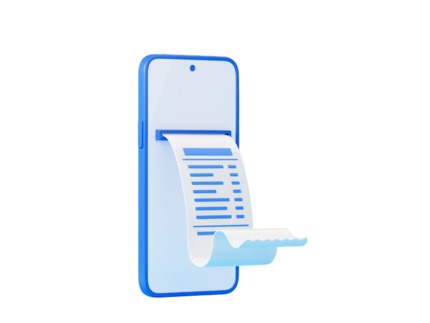
What is GST e way bill?
In a bid to revolutionize the way goods are transported across the country and promote tax transparency, India introduced the Goods and Services Tax (GST) regime. One of the key components of this reform is the GST E-Way Bill, a digital document that has transformed the logistics and transportation sector. Let’s delve into the intricacies of the GST E-Way Bill and understand its significance in modernizing India’s trade landscape.
What is GST E-Way Bill?
The GST E-Way Bill is an electronic document generated online via the GST Common Portal. It is mandatory for the movement of goods valued at or above a specific threshold within the country. The bill contains crucial information such as the consignment’s origin, destination, type of goods, transporter details, and the taxes applicable.
E-way invoices, which are authorization documents, are required for the transportation of items with a value greater than Rs. 50,000. It includes information on the items being transported as well as the sender, recipient, and transporter.
It is required for intrastate goods starting on April 25 and for interstate deliveries starting on April 1, 2018, and it can be electronically created through GSTN. E-way invoices can be generated or canceled through SMS, an Android app, and a site-to-site link via API when the parties’ accurate GSTINs are submitted. Before using the GSTIN, check it with the GST search tool.
What are the benefits of the GST e-way bill system?
- The transfer of items would never again require the same volume of state-specific paperwork. Because the RGIC device is already installed in the vehicle, the owner of the vehicle is no longer required to carry paper copies of the e-way invoices. By eliminating those difficulties, it made carrying and maintaining physical documents simpler.
- E-way bills have substantially sped up and increased the effectiveness of the overall transportation system. It decreased the “n” number of checkpoints that were located at the state and interstate boundaries. The gap between the average yearly mileage of Indian trucks—85,001 km—and the 150,001 to 250,001 km in wealthy nations has shrunk.
- E-way invoices are generated via the government’s online site. It is quite simple and user-friendly and allows dealers to self-generate e-way invoices. The procedure is expected to become easier in the following days, making it possible for even laypeople to create an e-way bill and simplifying the transfer of commodities.
- E-way billing will lower the cost of logistics. It would support paper invoicing and, hence, discourage tax evasion.
Who needs an e-way bill?
If you have a GST registration and are directing the transportation of goods, you must create an E-way bill under the following circumstances.
- eWay Bills are generated whenever goods are transported to or from a registered person for a sum greater than Rs. 50,000.
- Even an E-way bill can be provided by the registered person if the value of the goods is less than Rs. 50,000.
- An E-way bill must also be presented by anyone who is not enrolled. When an unregistered person provides products or services to a registered person, the receiver is in charge of making sure that all requirements are met.
- If the provider has not provided an E-way Bill, the transporter must do so in order to move the products by land, air, train, etc.
Requirement for the bill:
- Creating an account on the EWB portal
- The accompanying invoice, bill, or challan for the shipment of goods
- Transporter ID or the vehicle number (For road transportation)
- Transporter ID, Transport document number, and document date (For rail, air, or ship transportation)
How to generate it?
Step 1:
Set up an account for eWay Bill.
Once you’ve entered your username, password, and captcha code, click “Login”.
Step 2:
On the dashboard’s left side, under the “E-waybill” option, click “Generate new.”
Step 3:
Fill in the following fields:
- Transaction type
- Subtype
- Document Type
- Document number
- Document date
- From or To details
- Item details (Product name, description, HSN code, tax, unit, and quantity)
- Transporter details (Name, ID, document number, vehicle number)
Step 4:
Click submit. The system verifies the inputted data for problems and displays them.
Otherwise, your request will be completed, and an EWB-01 form with a unique 12-digit number will be created.
Exceptions to the E – Way Bill requirement:
The following products do not require an E-way bill. There are,
- Petroleum gas, kerosene oil, and diesel
- Postal baggage
- Precious metals or stones
- Household items
- Coral
- Natural gas
- Fuels
E-way bill integrations:
1. Integration with FasTag:
The E-way bill system is coupled with RFID/FasTag. When a passing car enters data into the RFID tag reader, the E-way bill gateway updates instantly. It recognizes and detects phony E-way bills that are generated even though no goods are moved.
2. System integration with Vahan:
The Ministry of Highway and Road Transport implemented the e-way law. It verifies the existence and accuracy of the vehicle number entered into the E-way bill system.
3. Integration with the GST portal:
E-invoicing creates an invoice reference number on a government website, which is then automatically filled up in the GSTR 1 and the E-way bill portal, where the HSN is provided for items.
The blending of interstate borders is a success made possible by the introduction of the e-way bill. The amount of time spent at state borders processing and verifying documents was a hindrance to all businesses. So, adopt this e-way billing system and make your process easy and efficient.
Stop being diverted by paperwork challenges. You keep focusing on your business. Our team handles all of your legal documentation work. We’re FilingsFirst: Contact us for your company registration.

